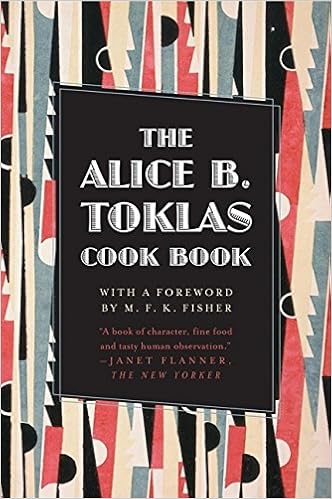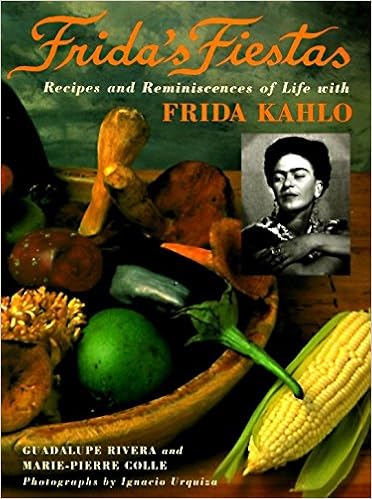
Throughout our gastronomic history, women’s appetites and appreciation for cuisine have certainly matched those of men. Yet, they have been consistently overshadowed. While the art of entertaining was left to the fairer sex, the enjoyment of eating—especially in large quantities—was deemed to be a more masculine endeavor. But one look at women in today’s media, from cookbook authors to chefs to bloggers, goes to show they contribute as much to modern food culture as men.
In order to set the record straight, we’ve come up with a list of some of the most famous women foodies in history.
Cleopatra
The Queen of the Nile was not only a keen ruler, but also a shrewd diplomat. She would entertain foreign guests with lavish feasts, featuring cuisine made with ingredients that came from the far reaches of her empire. Platters were laden with fish, wild game, roast fowl, grains, legumes, vegetables, fruits, and sweets. Beer and wine flowed freely, and servants ensured every glass was kept full. According to Pliny the Elder, when Marc Antony challenged Cleopatra to host the most extravagant banquet in history, she complied by dissolving her pearl earring—worth the equivalent of millions today—in a cup of vinegar and then drinking it. Well played, Cleopatra.

Try making Egyptian kushari in her honor; image courtesy of Shutterstock
Catherine de Medici
In addition to bringing several Florentine chefs with her to France when she married Henry II, de Medici ushered in the use of forks, formal table settings, and dining etiquette. She is also credited with introducing new ingredients—including olive oil, white beans, artichokes, truffles, and sweets, such as mousses and sorbets—to France, and is said to have inspired a renaissance in French cuisine. While her influence may have been slightly exaggerated, she certainly made her mark on the French palate.

Women were once forbidden from eating artichokes, so you know what you have to do; image by Chowhound
Catherine the Great
The Empress of Russia, aka Catherine II or Catherine the Great, was as politically savvy as they come. A stickler for routine and living what was considered to be a healthy lifestyle for the 18th century, she consumed the same simple fare—coffee in the morning, an apple or two in the evening—each day. However, lunch was the largest meal of the day and usually featured a combination of Russian and foreign dishes. The tsarina also went out of her way to honor her frequent guests by serving them their favorite dish, no matter how extravagant, and is credited with establishing the custom of taking afternoon tea in Russia.

Host your own afternoon tea in homage; image courtesy of Shutterstock
Empress Dowager Cixi
This concubine-turned-empress was the last ruler of the Qing dynasty in China. She had a refined palate and demanding persona, and kept both an Imperial kitchen and Western kitchen within the Forbidden City, employing hundreds of cooking staff. It’s said that she was served over 120 dishes at every meal. The kitchen was divided into sections that specialized in making a variety of delicacies each day, including noodles, steamed buns, dumplings, wok-fried dishes, meats, vegetables, pastries, and sweets. Only the finest ingredients were used, and some of Cixi’s favorite dishes, such as individually stuffed bean sprouts (yes, you read that correctly), were made using painstakingly tedious techniques.

Skip the bean sprouts and stuff some dumplings instead; image courtesy of Pixabay
Sidonie-Gabrielle Colette
It should come as no surprise that French author Colette was a true gourmand, since food features so prominently in her books. Her prose drips with sensuous descriptions of young lovers expressing their desire through the exchange of edible gifts, like Champagne and candy. But Colette wasn’t just a hedonist. During World War II, she made a living writing articles for women’s magazine Marie-Claire, including practical recipe advice on how to make rationed ingredients, such as milk and eggs, stretch farther. After the war, she struck up a friendship with Raymond Oliver, the chef and owner of Le Grande Véfour, a restaurant in the Palais-Royale, where you can still find the seat named for her at her favorite corner table.

Clafoutis is a tres French way to use up milk and eggs; image by Chowhound
Alice B. Toklas
Perhaps best known as the life partner of famous American author Gertrude Stein, Toklas was an accomplished writer in her own right. Growing up in an upper middle class German-Jewish family in San Francisco, Toklas was used to dining on French cuisine. But it wasn’t until she lived in Paris with Stein that she became familiar with regional French cooking. Toklas spent years collecting recipes and learning different techniques, often entertaining famous friends and artists, like Picasso. Eventually, she wrote “The Alice B. Toklas Cook Book,” which includes a foreword by M. F. K. Fisher and a recipe for hashish fudge.

Classic chocolate fudge (hashish not included); image by Chowhound
Frida Kahlo
According to Guadalupe Rivera, Kahlo’s stepdaughter and co-author of “Frida’s Fiestas: Recipes and Reminiscences of Life with Frida Kahlo,” the famous artist considered being a good cook part of her identity not only as a Mexican woman, but also as a wife to fellow artist, Diego Rivera. Kahlo apparently loved to entertain, often inviting friends and family over to celebrate birthdays and popular holidays, such as the Day of the Dead. From prickly pear to pulque, fresh corn tamales to flan, Kahlo reveled in her role as a consummate host and accomplished cook.

We feel Frida would definitely have approved of edible flowers; image courtesy of Shutterstock
Check out some other famous female food personalities via our favorite classic women-authored cookbooks (not to mention more contemporary titles), our profile of the women behind Coolhaus, our interview with chef Mia Castro, our exploration of the most significant women in American food history, and our guide to the best L.A. restaurants from the women of “Top Chef.”
All featured products are curated independently by our editors. When you buy something through our retail links, we may receive a commission. For more great hand-picked products, check out the Chowhound Shop.
from Food News – Chowhound https://ift.tt/2HOUjTU
via IFTTT


































